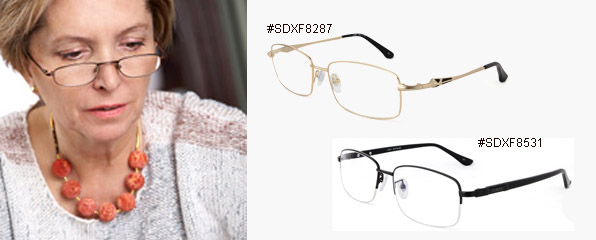In the battle of single vs. bifocal eyeglass, there is, after all, no exact winner at all. What is of paramount importance is to get fully acquainted with their attributes and have a fair and sound knowledge of how they work. Equally important is to select a pair which meets your requirement for vision correction to the utmost.
Single eyeglasses can be defined as a kind of prescription eyeglasses equipped with single corrective power throughout the whole lenses. Put simply, if you are singularly farsighted or myopic, you are prescribed to wear such eyeglasses with single optical power. The lenses can have matching prescriptions or different ones. These can consist of a plus or minus prescription or even no prescription in one eye, while the other has either a plus or a minus prescription, or both. It is very conducive to those who suffer from vision problem and thus are not able to see things clearly, be it in proximity or in long distance. When you read books, work or do exercises, such single eyeglasses can be exceptionally helpful.
More often than not, however, some people are afflicted with presbyopia and myopia and/or astigmatism at one and the same time, and an ordinary pair of single vision eyeglasses can’t suffice to meet their urgent need to see things with more clarity. At this point, a pair of bifocal eyeglasses will do the best to their satisfaction. Unlike single vision eyeglasses, bifocal eyeglasses are such as can have two distinct corrective power incorporated into one single lens. And such bifocal eyeglasses prove immensely useful to those with presbyopia and myopia at the same time, owing to the fact that the upper portion of bifocal lens enables you to see things more clearly in distance, i.e. Distance vision, while the bottom part is endowed with close range focusing, especially helpful for Presbyopia correction. Bifocal eyeglasses aim at strike a balance between near vision and distant vision, and by so far, it has done so good a job. The traditional defect known as image jump brought about by the abrupt change of prescription power, now has been improved by means of providing more smooth and seamless lens. We call almost call it no-line bifocal glasses.
Having expounded so much of my view on single and bifocal eyeglasses, you might faintly grasp the quintessence of both glasses. So next time when you are inquired of about who excel whom, you can just tell them no such champion exist between them. Only when they suit your needs can they be justified as winner in your own view.












